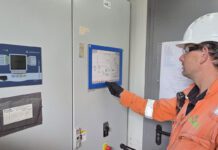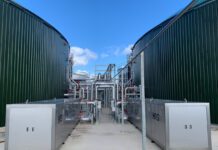
UK autoclave manufacturer Aerothermal Group announced on 29 October that pre-treating black bag municipal waste in an autoclave before sending it to AD could increase methane generation by over 300% and substantially reduce the amount of material requiring disposal.
The announcement came on the back of new research carried out by Dr. Zhengjian Wang and Dr. Nigel Baily at Aerothermal’s test facility in Poole.
As part of the research, experiments were conducted in triplicate on two waste streams. The first waste stream consisted of a sample of MSW feedstock with large items removed. Tests on this demonstrated how much extra material can go to the AD system as well as the increased gas yield per tonne of material fed to the AD system. The second waste stream was a sample of MSW feed stock used to demonstrate the improvements that autoclaving can achieve on a like-for-like basis.
Testing with and without pre-heating
The two waste samples were each divided into four portions. One portion of each waste was processed each day, four days per week. Fifty percent of each was processed via the autoclave route and the other half was processed via a non-autoclave route.
After loading, the autoclave was initially evacuated using a vacuum pump to remove incondensable gases which were filtered out in activated carbon filter beds. The autoclave was then brought up to pressure and temperature (6.2 bars abs/160ºC) by the injection of steam and when the temperature had equalised throughout the autoclave the load was left to “cook” for 45 minutes.
Twelve cylindrical constantly stirred tank anaerobic digesters, each of which has a working volume of 1.8 litres, were used for this trial. To start the process 1.8 litre of seed inoculums was first added into each digester. When the digesters reached the required temperatures a daily feeding, semi-continuous operating regime was started according to defined organic loading rates.
The results
The biogas production was monitored every day and the gas composition was measured once per week. The pH of the digestate was monitored daily. A weekly composite digestate sample for each single digester was collected and the properties such as DS, VS, ammonia and VFAs were analysed once per week.
Test results on the first waste stream (where large items had been removed) revealed that autoclaving gives a gas yield of about 150m3/tonne which is more than double the target of 65m3/tonne of waste. Autoclaving also greatly increased the fraction of the waste that could be digested, as well as the gas yield from each kilogram of waste sent to the digesters which substantially reduced the amount of material requiring disposal.
Tests on the second (like-for-like) waste stream revealed that autoclaving gives a substantial improvement in gas yield, with similar figures recorded. Both waste streams showed autoclaved materials were less susceptible to the development of high VFA concentrations than un-autoclaved material and steam consumption was in close agreement with predictions.






